There’s nothing more frustrating as a gardener than to watch the fruits of your labor emerge with a bad case of blossom-end rot. Unfortunately, that has been the case with a couple of my tomato and squash plants this year. Why is it happening, and how do you fix it?
What Is Blossom-End Rot?
Blossom-end rot in tomatoes presents itself as a circle at the bottom of the fruit. It starts small and pale and grows larger and darker with time.
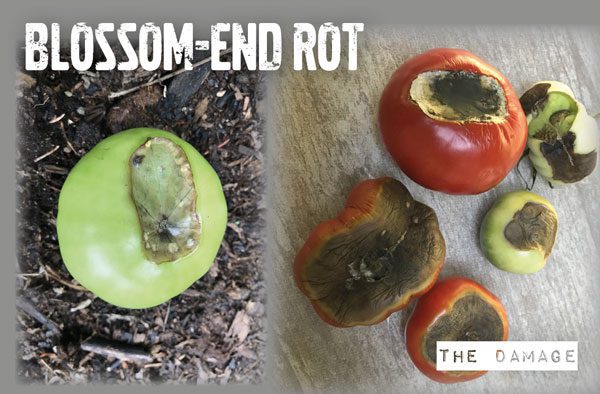
A single tomato plant growing in a container in my greenhouse is riddled with blossom-end rot, and to be honest, it’s devastating.
Once it starts, there’s nothing you can do to stop it. You have to remove the infected fruits and get to the root of the problem to save new growth.
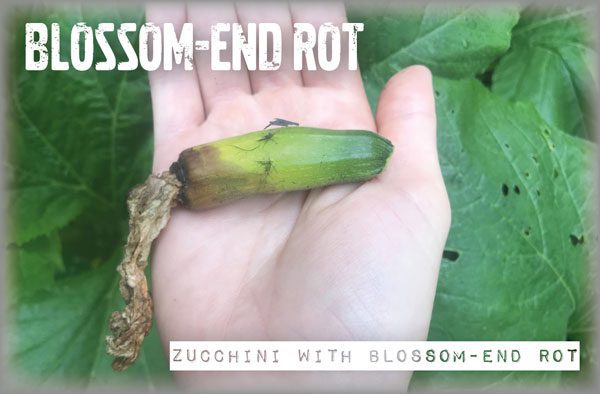
Some of my zucchinis turned to mush and nasty shades of yellow-brown before falling to the ground, and a couple of my spaghetti squash had the same fate.
Pollination Problems
I expressed my frustration to one of the vendors at the local farmer’s market the other day, and she told me in the case of the squash, it likely had to do with a lack of pollination.
She says that sometimes, the yellow flowers hide under the large green leaves, and the bees don’t know about them.
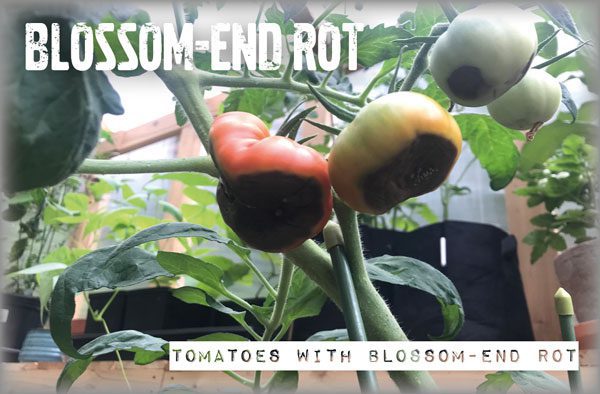
She recommended hand-pollination, something I wrote about in this post. I’ve been heading out into the garden with my daughter’s paintbrush ever since talking to the vendor, and things are looking up with the zucchini and spaghetti squash.
Other Potential Causes
Beyond pollination issues, there are a couple of things that can lead to blossom-end rot.
In the case of my tomatoes, I knew pollination had occurred, so that wasn’t the cause of my problem.
But irregular watering can be an issue, and so can a calcium deficiency.
As I mentioned, my infected tomato is in a container in the greenhouse. Containers dry out faster, especially in the extreme heat of the greenhouse.
Although I am conscientious with the watering, I added mulch to the base of my containers to help the plant better retain moisture.
Got Milk?
Because I’m on top of watering, I am pretty sure my plant is lacking calcium. To give it an instant kick, I diluted a tablespoon of powdered skim milk in a 2-gallon watering can.
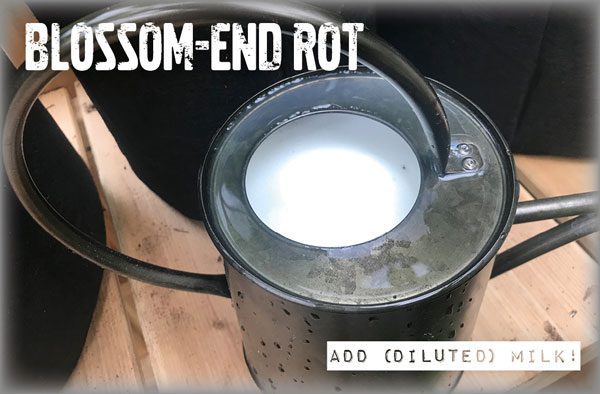
You can also dilute one part 1% milk to nine parts water.
Using too much milk can stunt your plant’s growth and cause wilt. Keep a close eye on the crop to see how it reacts to the diluted dairy and apply it once a week until you see the issue resolved.
Another option is to add fertilizers high in calcium to the soil. Plenty of organic options exist, and I added high-calcium hen manure to most of my garden beds to prevent further issues.
Got Heartburn?
Finally, with my zucchini plants, I added two Tums tablets to the base of each plant. As I water, calcium dissolves into the soil and is readily available for the plant to take up.
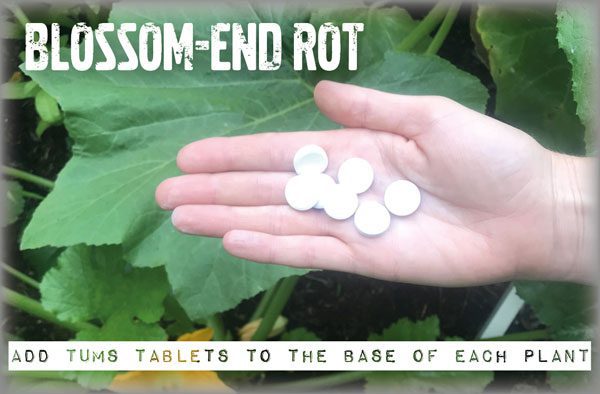
Along with the hand pollination, this trick seems to have worked very well, because I have plenty of healthy zucchini almost ready for harvest!
Blossom-end rot sure is disappointing, but if you treat the issue as soon as you see it, you can overcome it and enjoy the fruits of your labor after all!

